Abstract
1. The response of the rabbit anococcygeus muscle to field stimulation of its intramural nerves and to some drugs has been examined and compared with results previously obtained in the rat and the cat. 2. The rabbit muscle possesses an adrenergic innervation as demonstrated histologically by the Falck and Hillarp fluorescence technique. This innervation is sparser than in the rat or cat. 3. In vitro the muscle usually shows little tone but if suitably stretched will develop a maintained contraction. The response to field stimulation depends on the level of tone. When this is low purely motor responses are obtained. In the presence of tone the response depends on its level and the frequency of stimulation; low frequencies are purely inhibitory, with increasing frequency the response becomes biphasic and high frequencies produce a purely motor response. The higher the tone the more prominent the inhibitory components. Guanethidine 10(-5)M abolishes the motor component. 4. The muscle is caused to contract by noradrenaline, acting through alpha receptors, by hista,ome actomg through H1 receptors and by 5-hydroxy-tryptamine. Part of the effect of the latter appears to be due to the release of noradrenaline. 5. The muscle is caused to relax by acetylcholine acting through muscarinic receptors, by isoprenaline through beta receptors, by histamine in the presence of mepyramine through H2 receptors and by ATP and bradykinin. 6. The significance of these findings for the motor and inhibitory innervation of the muscle is discussed.
Full text
PDF
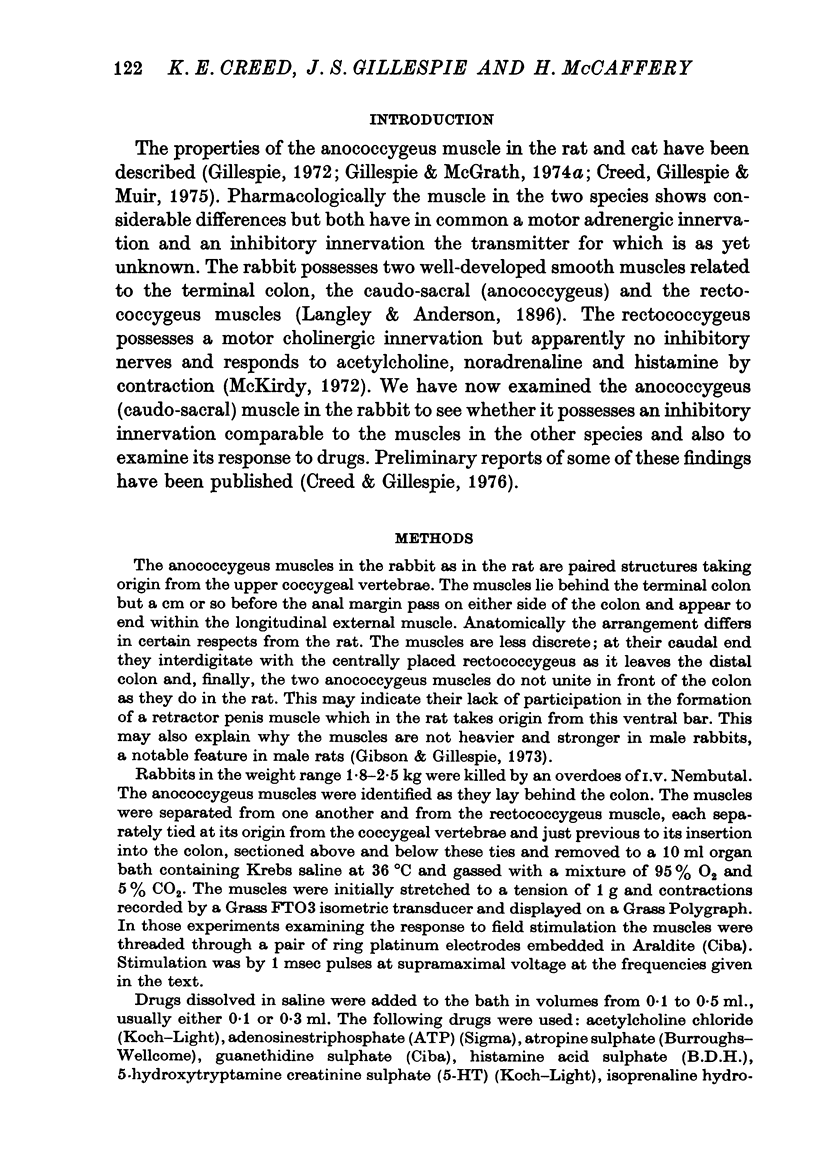
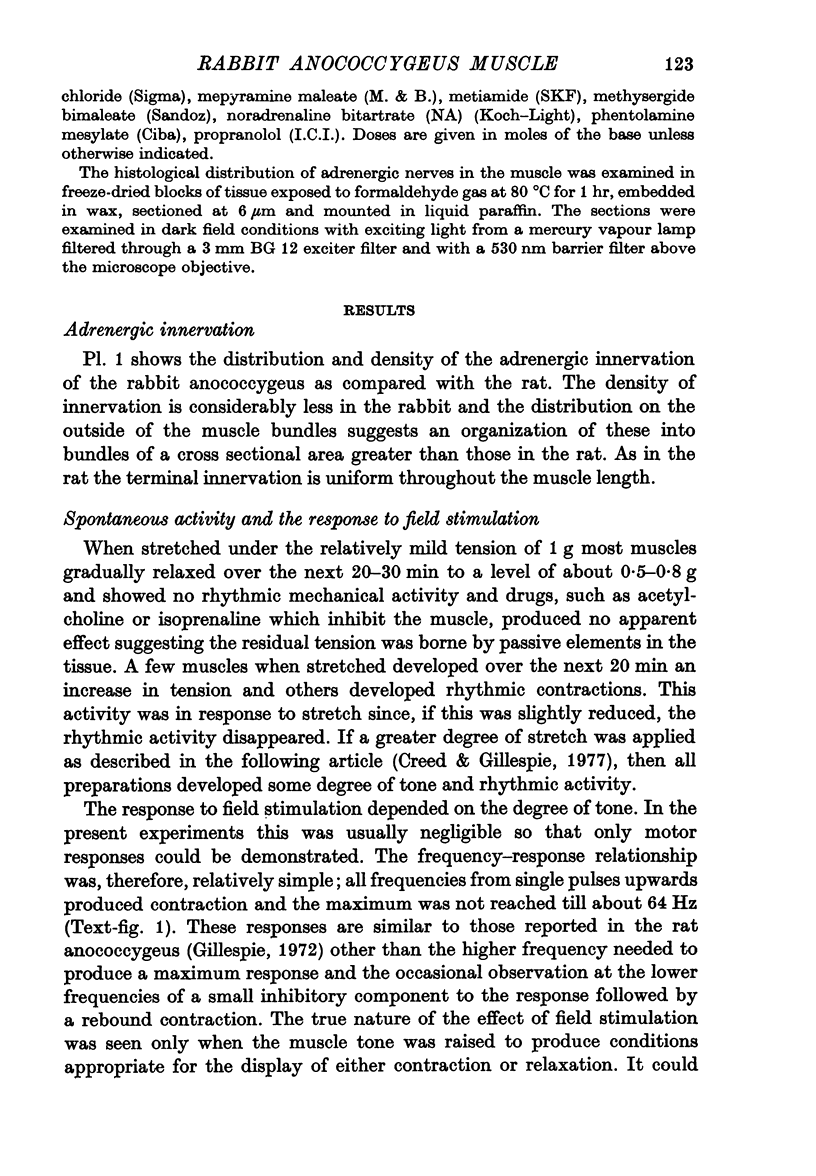
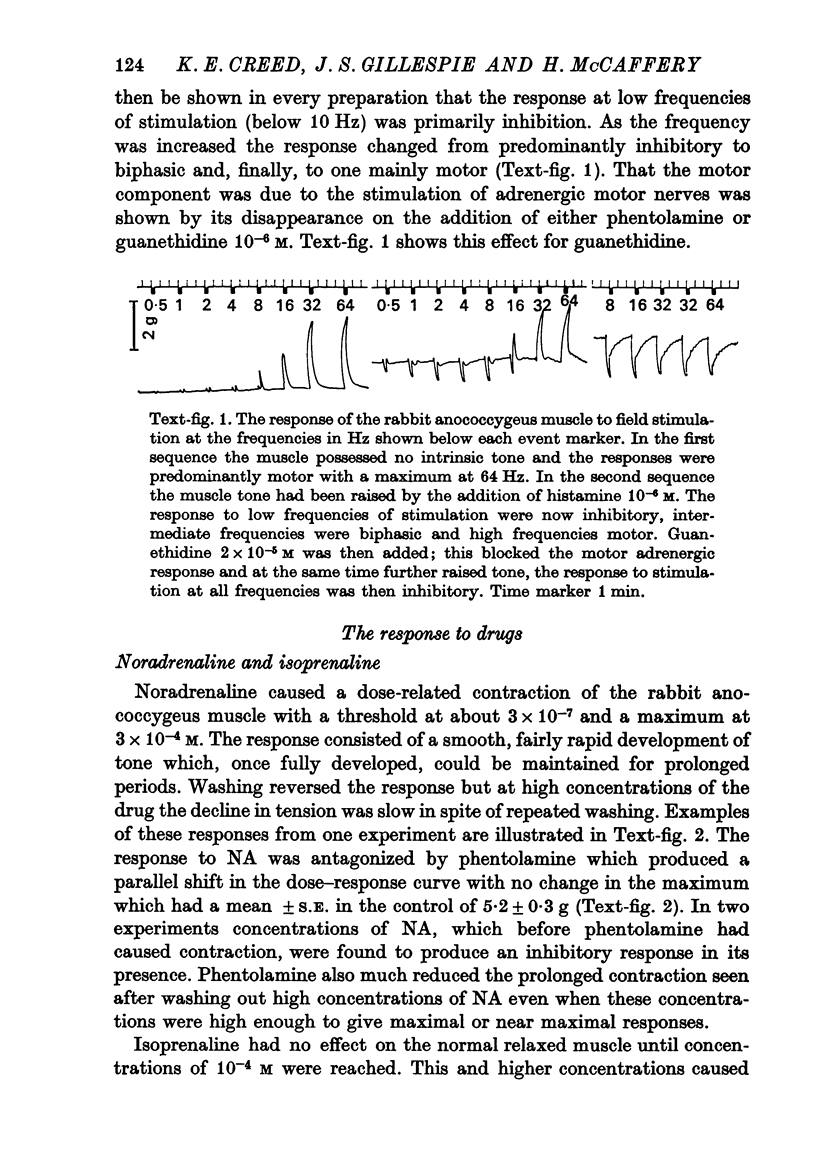
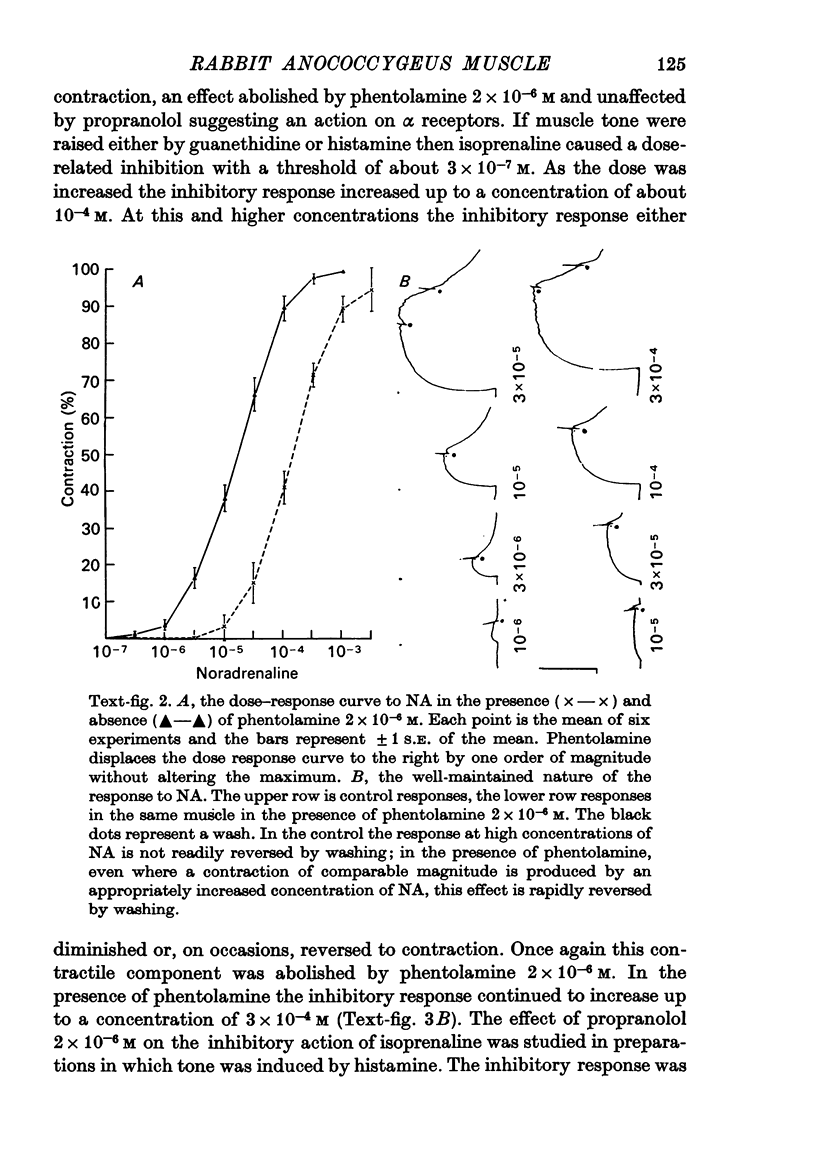
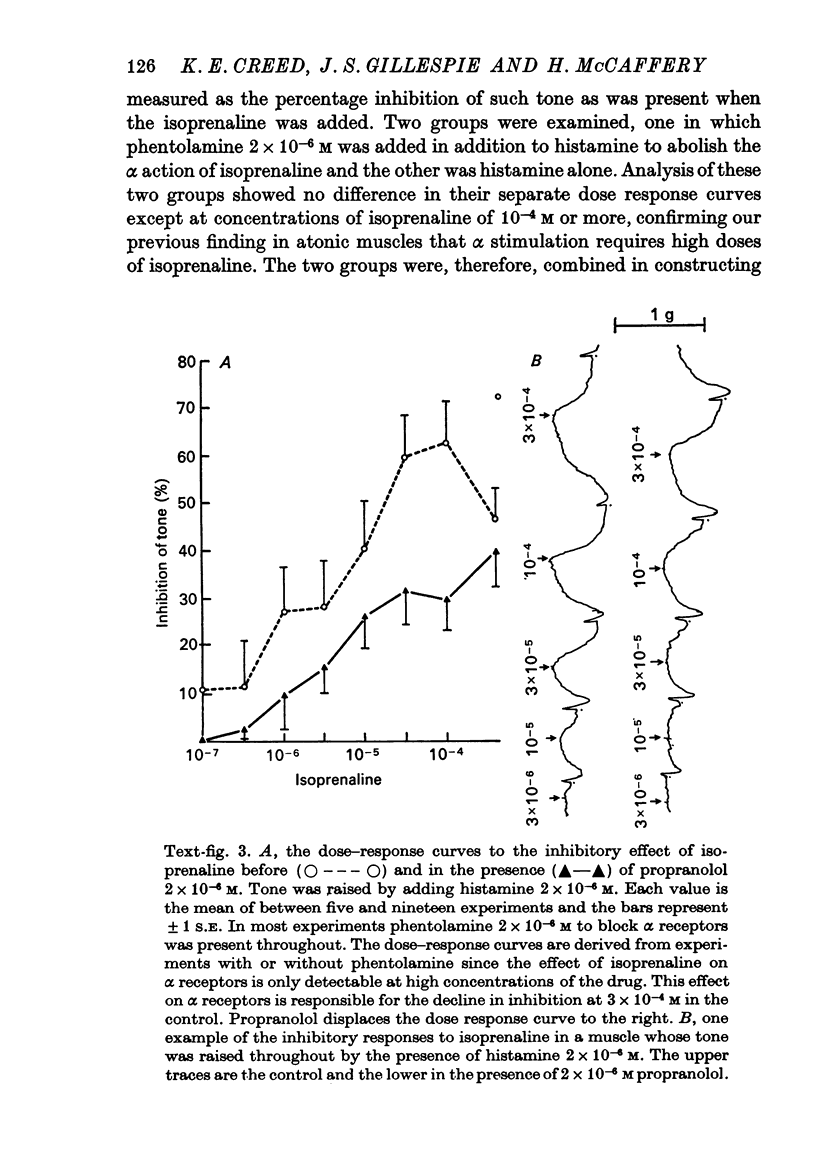
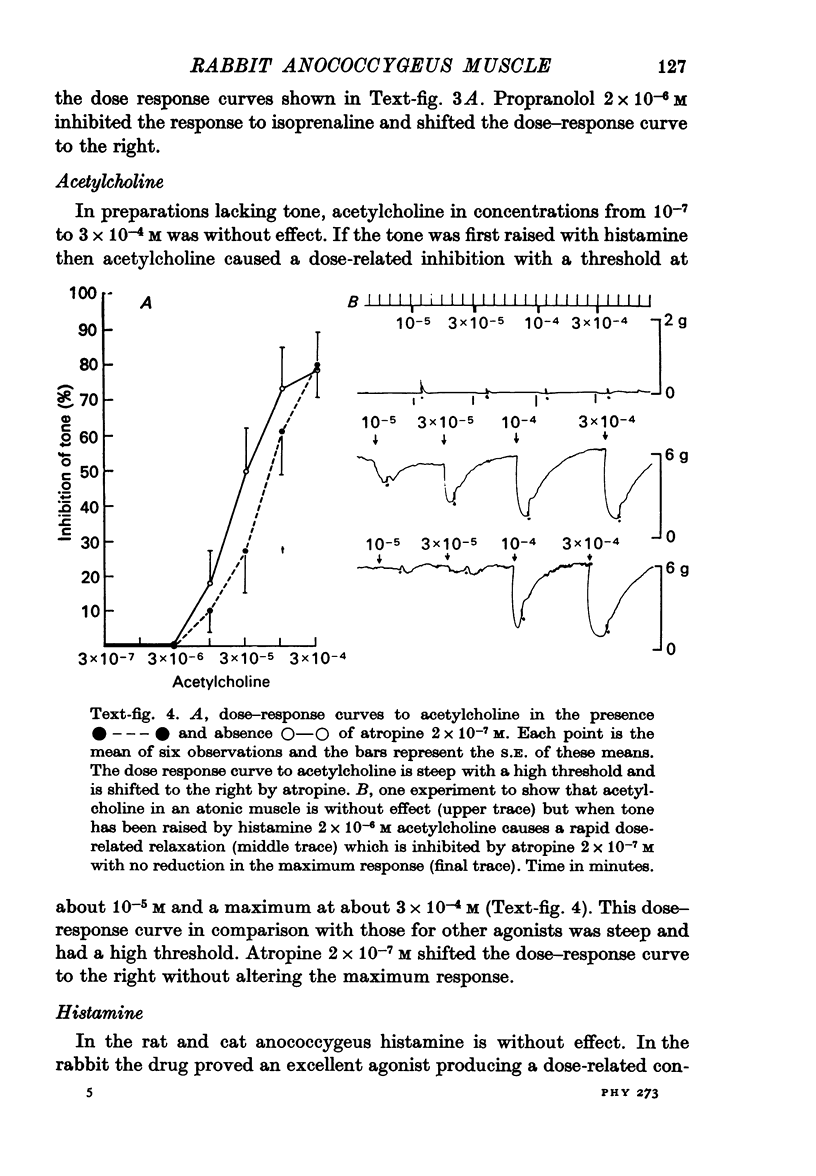
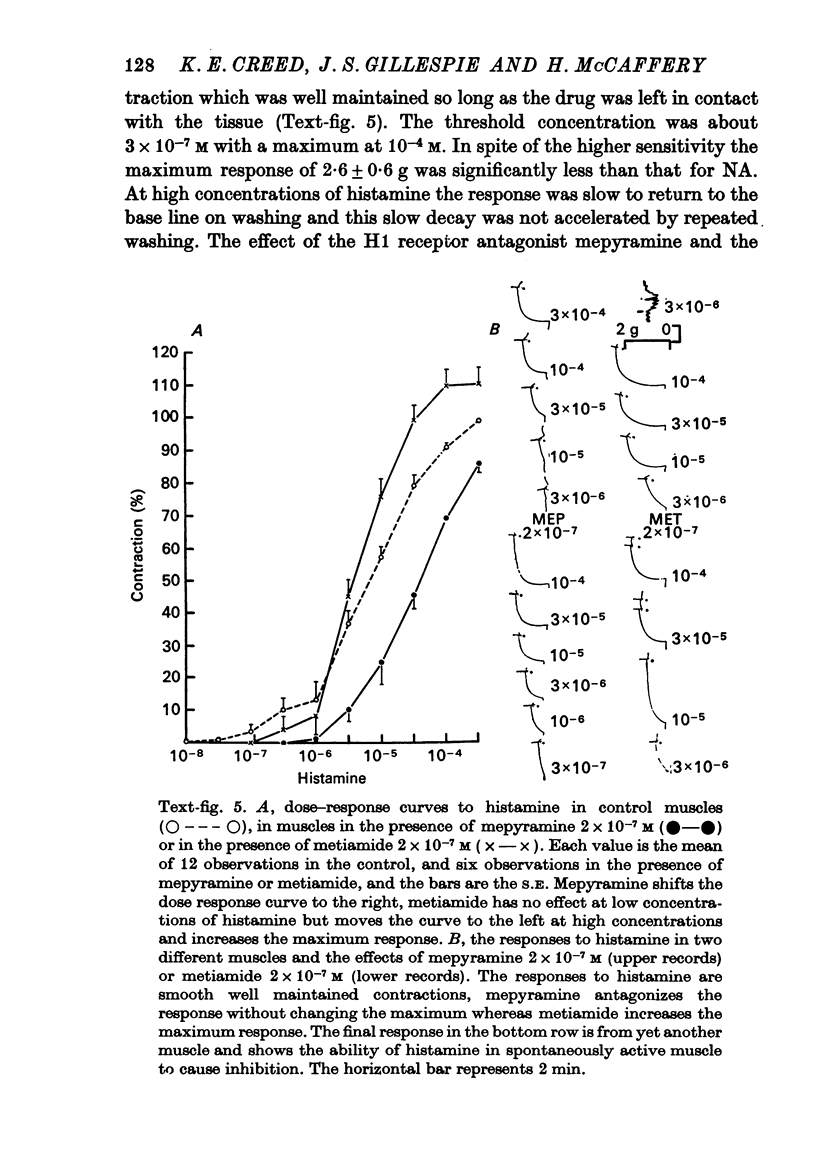
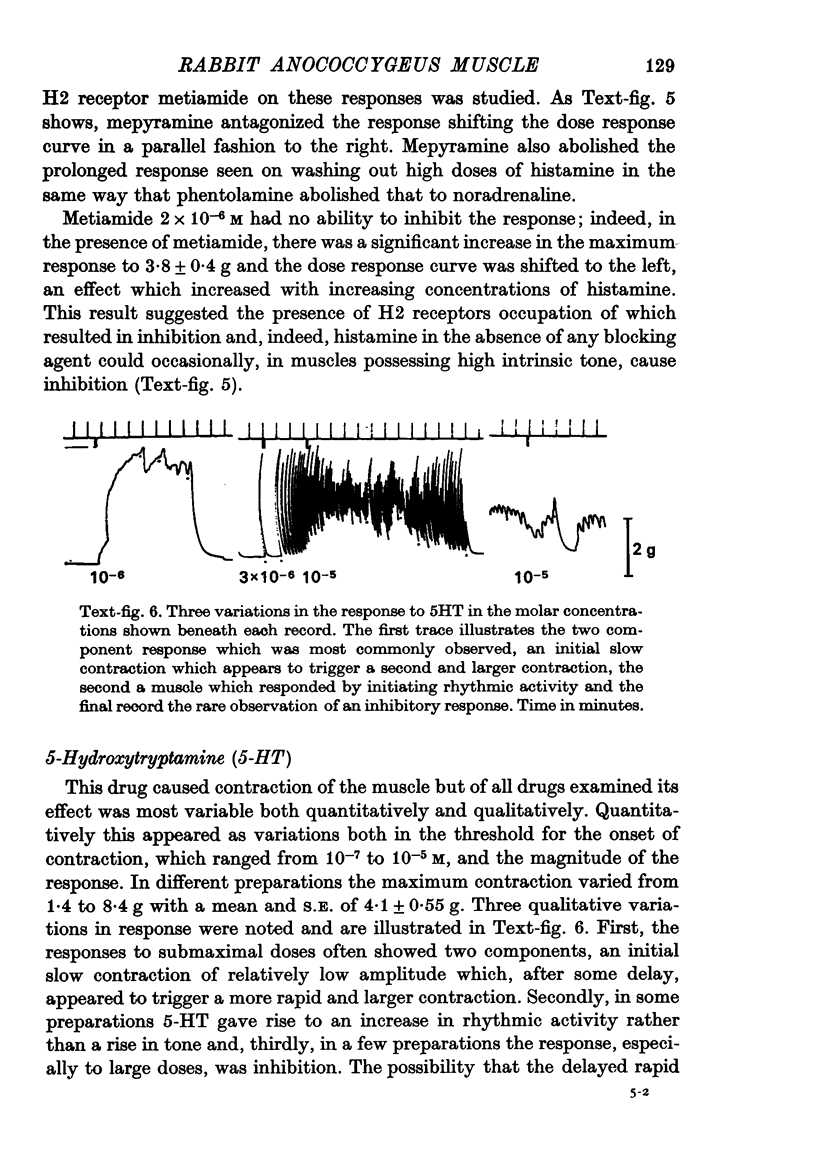
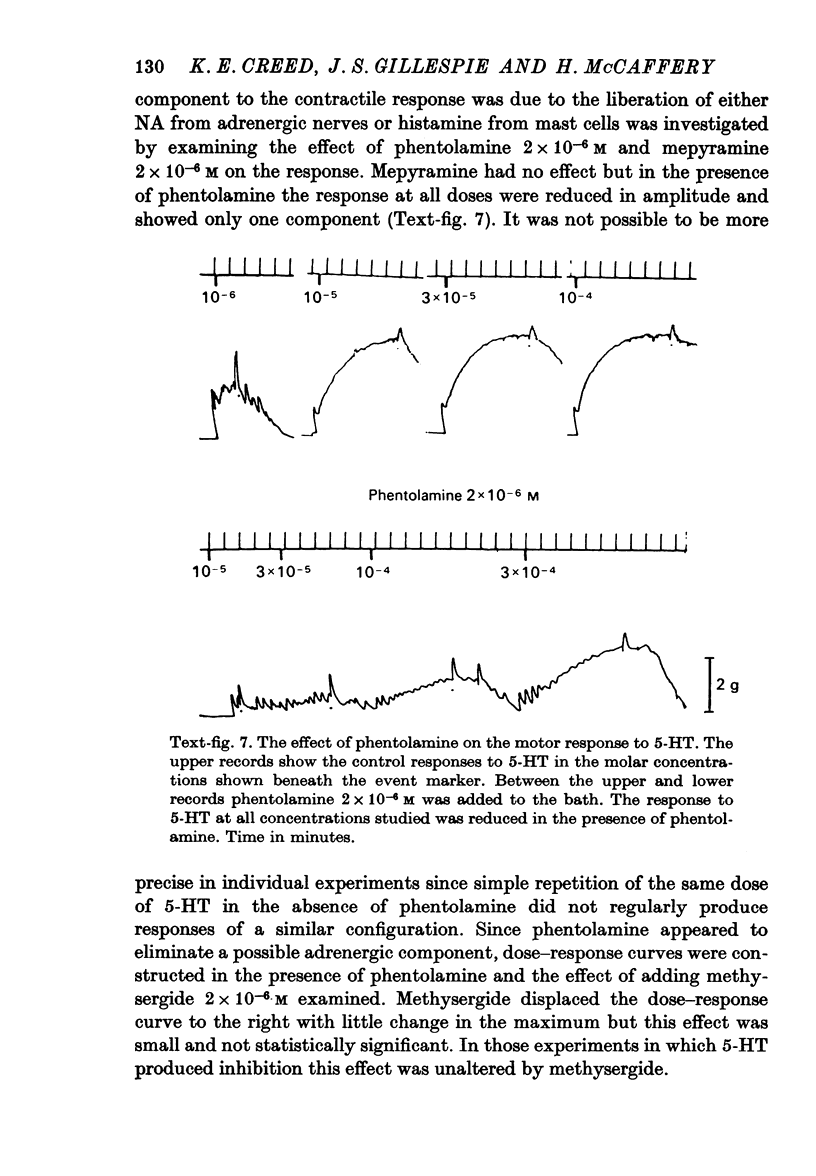
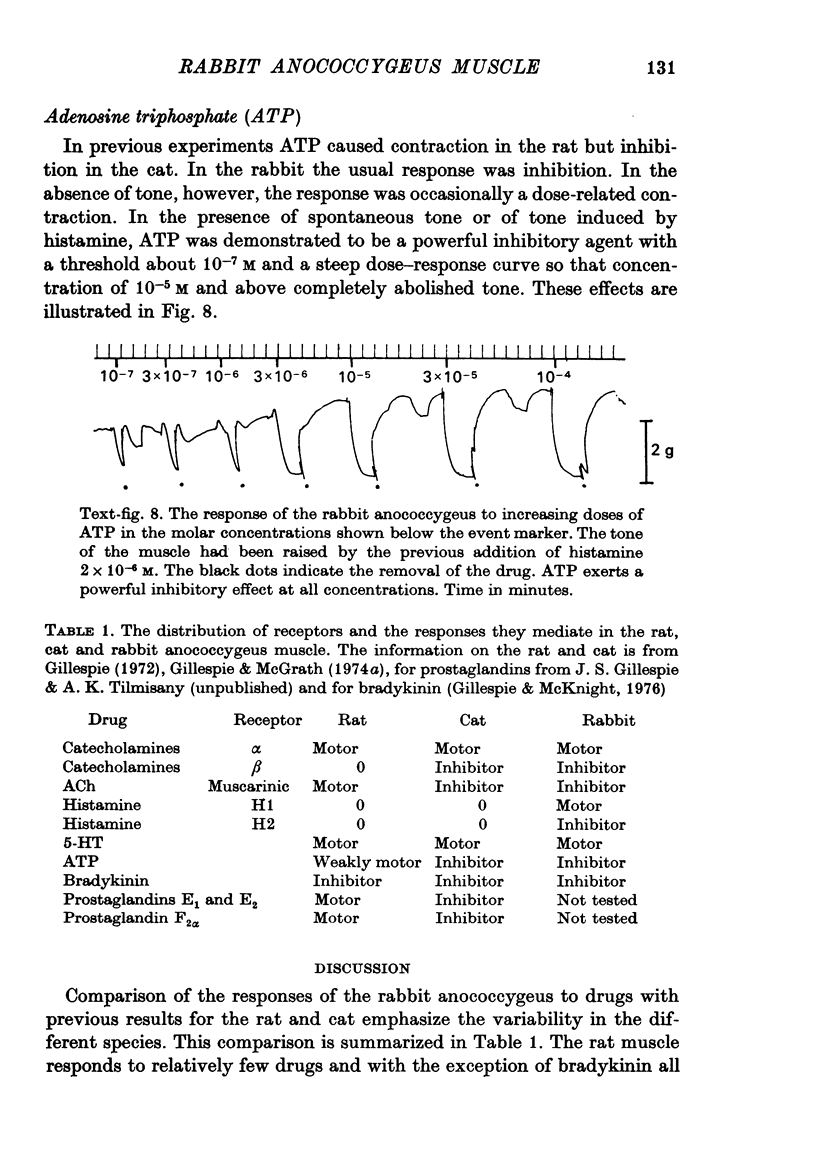
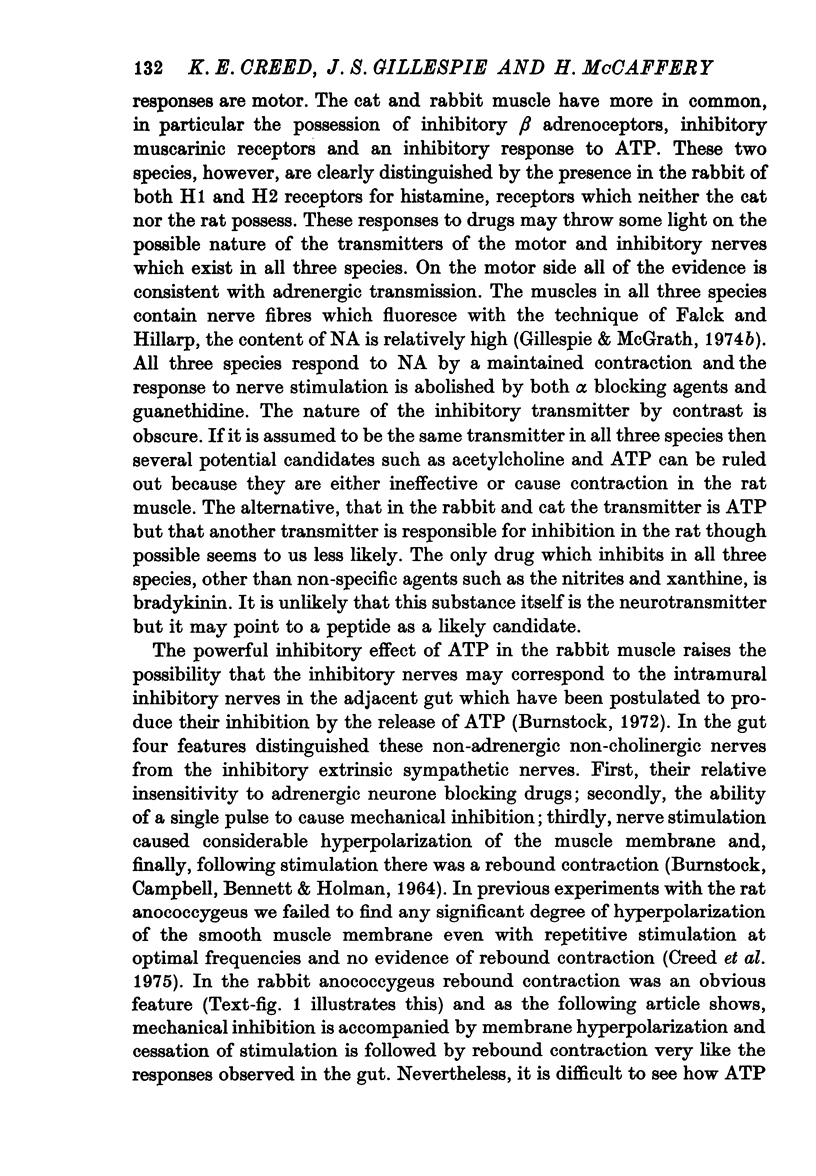
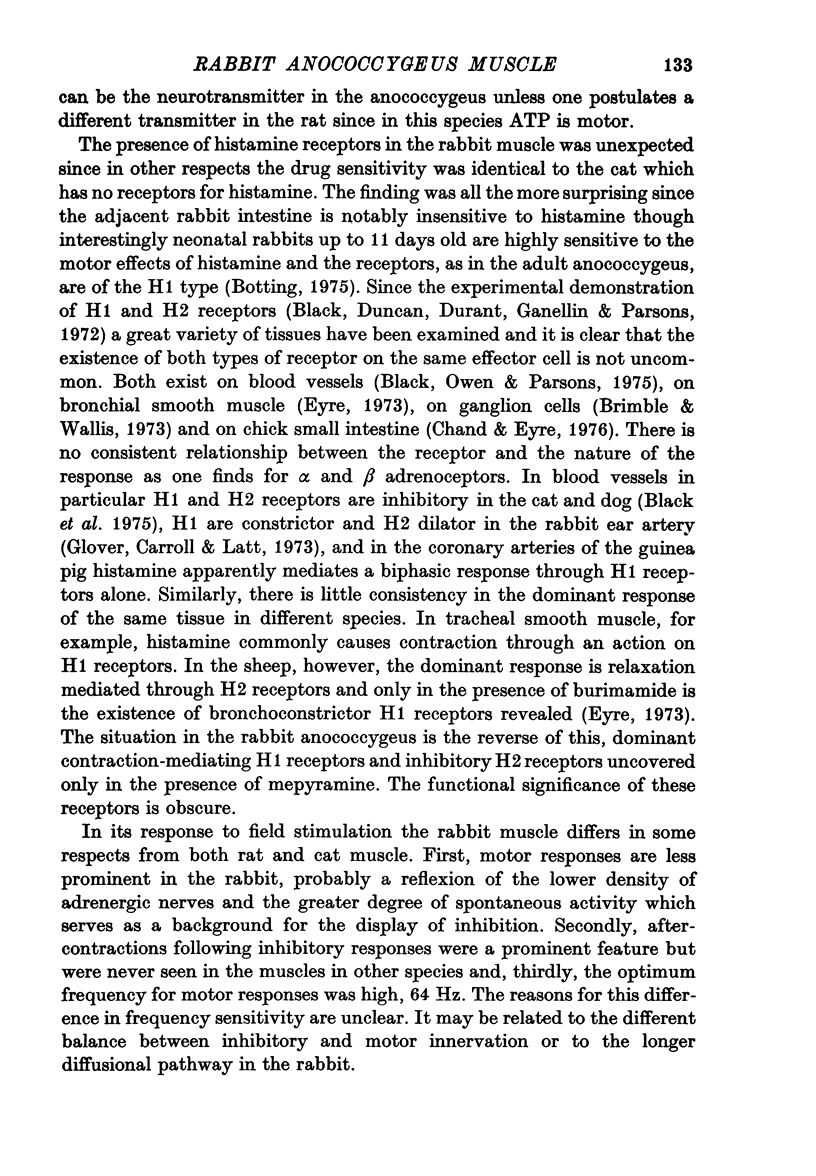
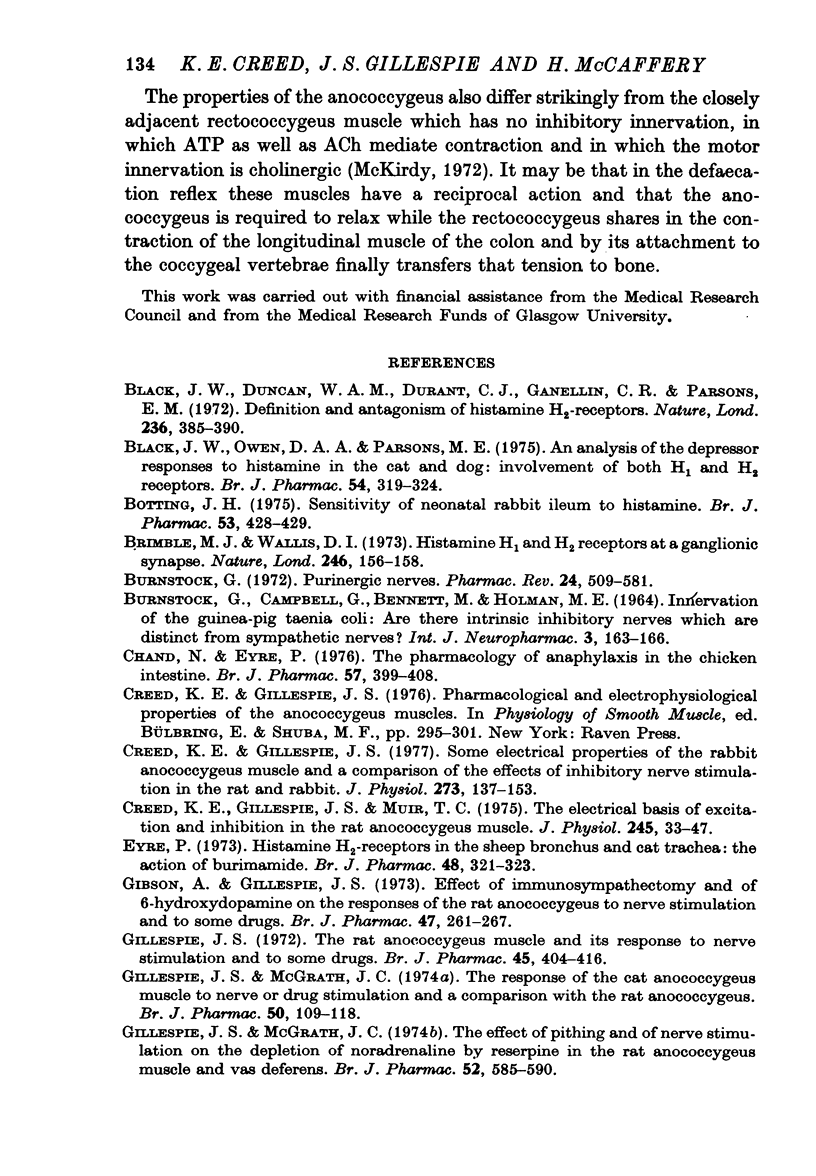
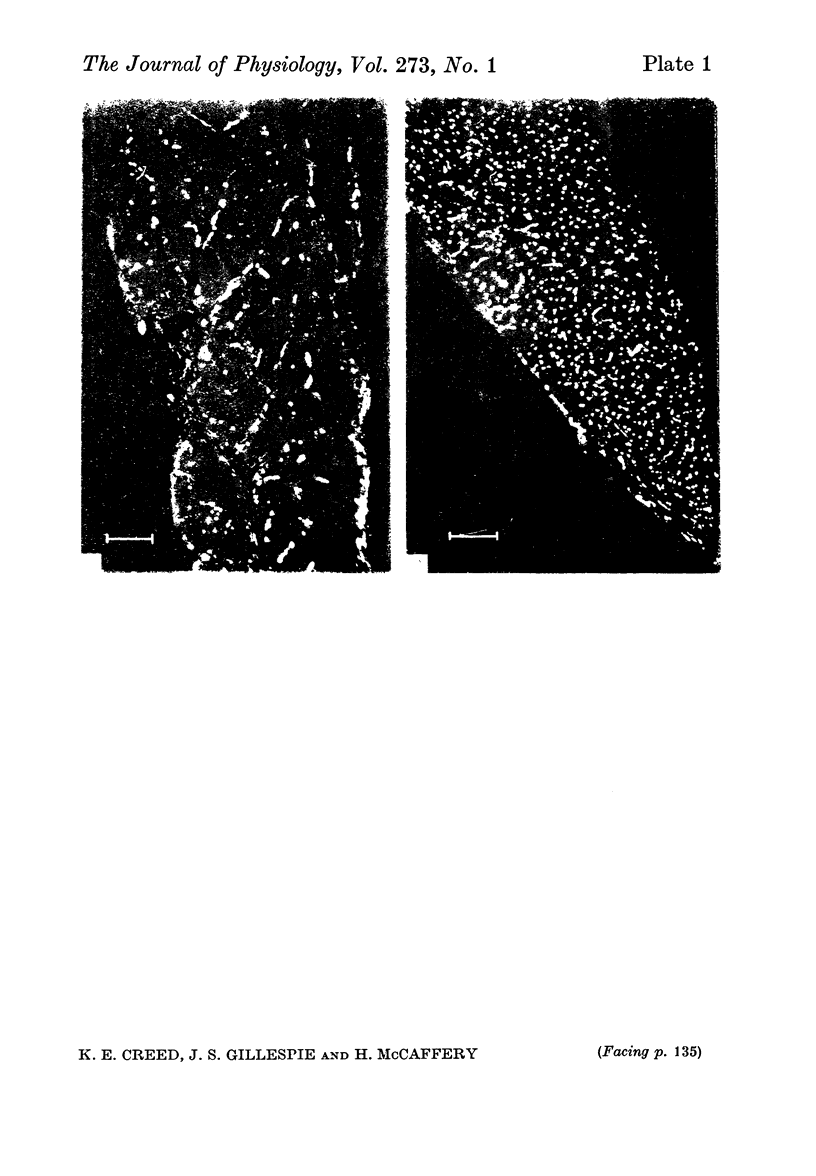
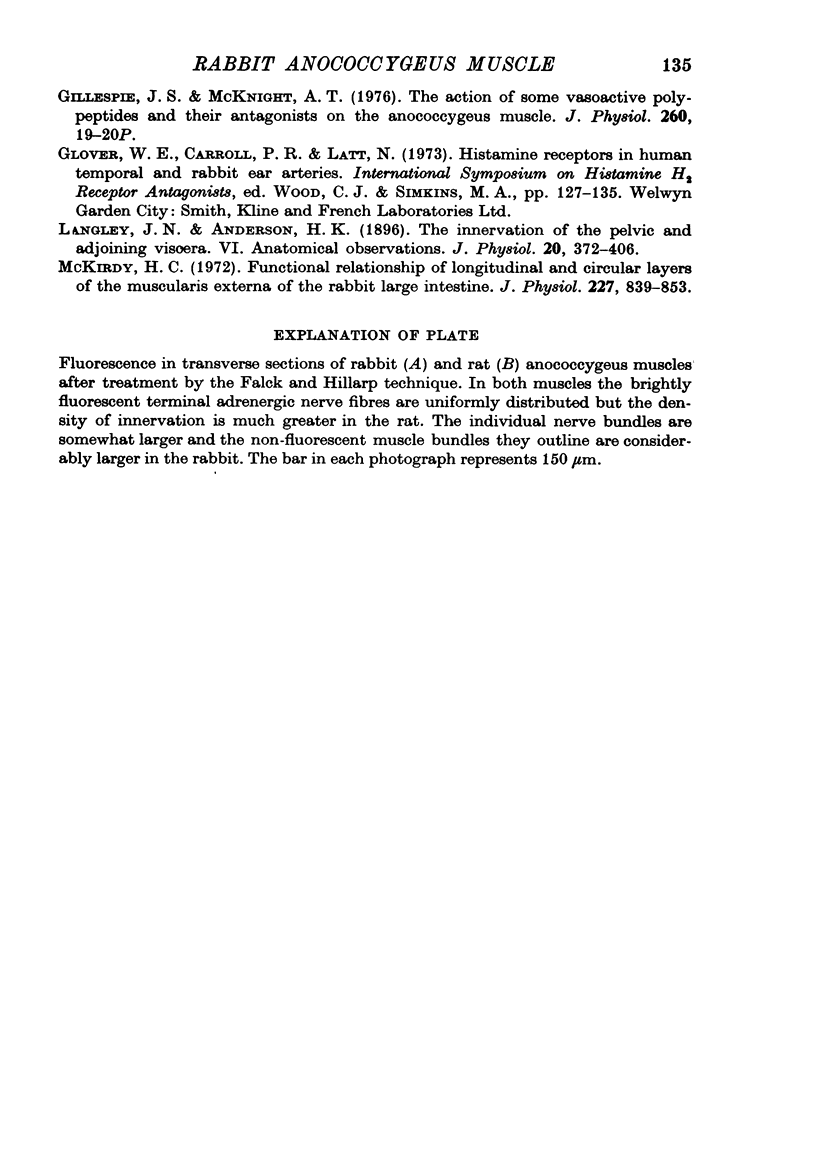
Images in this article
Selected References
These references are in PubMed. This may not be the complete list of references from this article.
- BURNSTOCK G., CAMPBELL G., BENNETT M., HOLMAN M. E. INNERVATION OF THE GUINEA-PIG TAENIA COLI: ARE THERE INTRINSIC INHIBITORY NERVES WHICH ARE DISTINCT FROM SYMPATHETIC NERVES? Int J Neuropharmacol. 1964 May;3:163–166. doi: 10.1016/0028-3908(64)90003-6. [DOI] [PubMed] [Google Scholar]
- Black J. W., Duncan W. A., Durant C. J., Ganellin C. R., Parsons E. M. Definition and antagonism of histamine H 2 -receptors. Nature. 1972 Apr 21;236(5347):385–390. doi: 10.1038/236385a0. [DOI] [PubMed] [Google Scholar]
- Botting J. H. Sensitivity of neonatal rabbit ileum to histamine. Br J Pharmacol. 1975 Mar;53(3):428–429. doi: 10.1111/j.1476-5381.1975.tb07381.x. [DOI] [PMC free article] [PubMed] [Google Scholar]
- Brimble M. J., Wallis D. I. Histamine H1 and H2-receptors at a ganglionic synapse. Nature. 1973 Nov 16;246(5429):156–158. doi: 10.1038/246156a0. [DOI] [PubMed] [Google Scholar]
- Burnstock G. Purinergic nerves. Pharmacol Rev. 1972 Sep;24(3):509–581. [PubMed] [Google Scholar]
- Chand N., Eyre P. The pharmacology of anaphylaxis in the chicken intestine. Br J Pharmacol. 1976 Jul;57(3):399–408. doi: 10.1111/j.1476-5381.1976.tb07680.x. [DOI] [PMC free article] [PubMed] [Google Scholar]
- Creed K. E., Gillespie J. S., Muir T. C. The electrical basis of excitation and inhibition in the rat anoccygeus muscle. J Physiol. 1975 Feb;245(1):33–47. doi: 10.1113/jphysiol.1975.sp010833. [DOI] [PMC free article] [PubMed] [Google Scholar]
- Creed K. E., Gillespie J. S. Some electrical properties of the rabbit anococcygeus muscle and a comparison of the effects of inhibitory nerve stimulation in the rat and rabbit. J Physiol. 1977 Dec;273(1):137–153. doi: 10.1113/jphysiol.1977.sp012086. [DOI] [PMC free article] [PubMed] [Google Scholar]
- Eyre P. Histamine H2-receptors in the sheep bronchus and cat trachea: the action of burimamide. Br J Pharmacol. 1973 Jun;48(2):321–323. doi: 10.1111/j.1476-5381.1973.tb06920.x. [DOI] [PMC free article] [PubMed] [Google Scholar]
- Gibson A., Gillespie J. S. The effect of immunosympathectomy and of 6-hydroxydopamine on the responses of the rat anococcygeus to nerve stimulation and to some drugs. Br J Pharmacol. 1973 Feb;47(2):261–267. doi: 10.1111/j.1476-5381.1973.tb08323.x. [DOI] [PMC free article] [PubMed] [Google Scholar]
- Gillespie J. S., McGrath J. C. The effect of pithing and of nerve stimulation on the depletion of noradrenaline by reserpine in the rat anococcygeus muscle and vas deferens. Br J Pharmacol. 1974 Dec;52(4):585–590. doi: 10.1111/j.1476-5381.1974.tb09727.x. [DOI] [PMC free article] [PubMed] [Google Scholar]
- Gillespie J. S., McGrath J. C. The response of the cat anococcygeus muscle to nerve or drug stimulation and a comparison with the rat anococcygeus. Br J Pharmacol. 1974 Jan;50(1):109–118. doi: 10.1111/j.1476-5381.1974.tb09597.x. [DOI] [PMC free article] [PubMed] [Google Scholar]
- Gillespie J. S., McKnight A. T. The action of some vasoactive polypeptides and their antagonists on the anococcygeus muscle [proceedings]. J Physiol. 1976 Sep;260(2):19P–20P. [PubMed] [Google Scholar]
- Gillespie J. S. The rat anococcygeus muscle and its response to nerve stimulation and to some drugs. Br J Pharmacol. 1972 Jul;45(3):404–416. doi: 10.1111/j.1476-5381.1972.tb08097.x. [DOI] [PMC free article] [PubMed] [Google Scholar]
- Langley J. N., Anderson H. K. The Innervation of the Pelvic and adjoining Viscera: Part VII. Anatomical Observations. J Physiol. 1896 Oct 19;20(4-5):372–406. doi: 10.1113/jphysiol.1896.sp000629. [DOI] [PMC free article] [PubMed] [Google Scholar]
- McKirdy H. C. Functional relationship of longitudinal and circular layers of the muscularis externa of the rabbit large intestine. J Physiol. 1972 Dec;227(3):839–853. doi: 10.1113/jphysiol.1972.sp010061. [DOI] [PMC free article] [PubMed] [Google Scholar]



